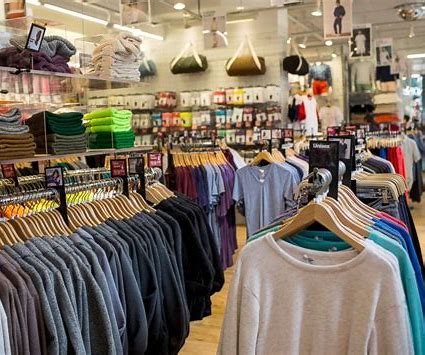Each season, fashion retailers are faced with certain challenges in the fashion and apparel industry as managing multiple processes and staying creative at the same time seems to be difficult, especially given the fashion industry’s highly competitive market. Anticipating changing trends in a competitive and dynamic retail market, managing stock and supplier orders, ensuring they have enough of one item but do not order too much of another, discounting dead stock, and lowering their margins are some of these challenges. In this article, we will discuss these challenges and how optimization can alleviate them. Optimization is the practice of enhancing organizational efficiency through process improvement by accomplishing business goals including but not limited to minimizing costs and maximizing outputs.
1. Overview of Fashion and Apparel Supply Chains
A fashion brand needs to design and push the right product at the right time, at the right price, and with the stock quantity that happens to be just enough to serve the market. Then, promotions are used first to amplify the demand and second to liquidate any remaining stocks. Fashion and apparel supply chains work in a very fast-changing environment. They always demand better quality, higher availability of products, broader assortments, and shorter delivery times. In this complex context, the main challenge is to gain value through supply chain management, allowing it to respond quickly, efficiently, and flexibly to demand fluctuations. The supply chain members of the fashion and apparel industry include fabric accessories suppliers, fashion designers, garment manufacturers and distributors, retailers, etc. The common characteristics of these supply chains include:
- They are retail-led
- They are usually stochastic systems with all kinds of inherent uncertainties in demand, service, and value
- The life cycle of their products is short
- Decisions in the fashion retail supply chain systems are highly consumer demand-driven
- Small purchase volume
- Strong seasonality
- High return ratio
- A significant difference in demand in different regions
As a result, seeking an optimal decision in the fashion retail supply chain systems is very challenging. Moreover, they have high requirements for logistics effectiveness and complex inventory management.

2. Challenges
The fashion and apparel industry has several characteristics that make it difficult to manage its productive and logistic process using traditional methods. In particular, the main issues identified for this sector are:
- The complexity of the planning process in this industry is driven by many items, disparate needs of different sales channels (e.g., retail, wholesale, foreign distributors), strong seasonal demand, fashion changes, and very restrictive capacity constraints.
- Fashion sales trend has rapid growth, a peak of popularity, and immediately a stage of decline or even rejection of the product by the market. In other words, the products in this industry have short life cycles. Since products have a limited time in the market from their introduction to decline, retailers have to be more efficient in the replenishment process.
- These supply chains have a vast product variety. There are thousands of Stock Keeping Units (SKUs) considering a variety of sizes and colors. Moreover, production lines have to manage highly variable small batches.
- The supply chains cannot respond quickly to market changes. In other words, sometimes supply and demand do not match. Enterprises in the entire supply chain cannot accurately grasp the downstream market demand information and cannot achieve efficient coordination. Therefore, they cannot respond quickly to market demands and often have long production cycles and measures for market opportunities.
- They need the right mix of inventory to serve many retail channels, increase customer service, and minimize unsold stock at the end of the season.
- The inventory backlog or shortage might happen in these supply chains. Under the supply chain bullwhip effect, the demand information is often distorted, resulting in inventory backlog and engulfing the supply chain profit.
- Excess inventory can occur at any point due to economic instability, forecasting errors, changes in consumer spending habits, purchasing setbacks and credit issues, and unexpected weather or climate change.
- These supply chains are often long and complex because they include suppliers located in several different countries. Offshore transfer of the labor-intensive stages of the supply chain to low-cost countries has been one of the favorite options of companies in industrialized countries to offset some of the risks in the volatile world of fashion. This contributes to increase lead-time, even reducing labor costs highly.
- The fashion and apparel industry has a long time to market. Indeed, there is almost a year lapse from the definition of the clothing item to its introduction in the stores. It means that wholesalers and stores define their orders before the previous season is over. Therefore, the level of unsold stocks is not known yet, thus contributing to enlarge demand uncertainty.
- Demand is volatile since it is driven by extremely unstable phenomena, such as weather, movies, sports, etc.
- The optimization of decisions involving stocks and prices requires accurate insights about the future. However, the classic demand forecasting perspective is dysfunctional mainly as far as fashion is concerned.

3. How Optimization Can Help
We can help the fashion and apparel industry with optimization-powered planning tools in the following areas:
- Channel/location/store planning
- Demand planning
- Assortment planning
- Financial planning
- Merchandise planning
- Space/Floor planning
- Assorted optimization tools such as store clustering, price optimization, markdown optimization, and size/color scaling.
We can use a mix of machine learning to extract patterns or predictions from the data and optimization to generate optimal decisions through the entire life-cycle for every product. The following list points out our possible contributions to this industry using optimization:
- Assortment optimization refers to the problem of selecting a set of products to offer to a group of customers to maximize the revenue that is realized when customers make purchases according to their preferences. Assortment affects costs because it drives inventory decisions. Poorly conceived inefficient assortments raise inventory costs and waste valuable shelf space. An assortment optimization planenables a company to compose the right range of sizes, colors, and shapes on top of the initial designs. The optimal assortment plan is intended to fit its customers’ wishes and expectations as closely as possible.
- Store clustering or size scaling optimization tools can be effectively integrated with assortment or allocation optimization tools. An efficient assortment or allocation optimization tool can vastly improve store selection and size/color distribution.
- Generating optimal production/purchase plans is typically complicated by multiple Minimal Order Quantities constraints, price breaks, as well as varying lead times (e.g., Chinese New Year slowing down production in Asia), and the fact that most products have never been sold before. We can develop a production/purchase optimization tool, suggesting exactly how many units should be produced or purchased for every product variant and when to order.
- We can optimize the transportation mix (e.g., sea vs. air freight) and the source mix (e.g., overseas suppliers vs. local suppliers).
- We can develop a stock allocation optimization tool to decide precisely how many units to allocate to each distribution center or store. In stores, the stock has two purposes: servicing the demand and attracting the clientele in the store. The allocation optimization properly takes into account this merchandising angle, making the most of every store. The optimization considers storage capacity limits (e.g., shelf space) and the limited capacity of the ground teams to cope with large incoming batches of products. Bundles and lots, which are handy to lower manutention costs, are also taken care of.
- Most fashion brands use discounts and other promotional mechanisms frequently. We can develop a pricing optimization tool, suggesting when to lower the price to ensure that there will not be any left over at the end of the collection while maximizing the overall gross margin. The optimized price is one that customers are willing to pay, and the brand also gets a good profit margin. An optimized price can mean a higher price than the initial price or a lower price. It all depends on the factors at play and the data gathered about customers, market, seasonality, competition, etc.
- We can optimize distribution by developing allocation and replenishment optimization tools. The main benefits of an optimized distribution are: 1) reduced transfers and markdowns, 2) better control of seasonal and regional inventory levels relating to the desired assortment or store grading tiers, and 3) minimizing the need for backstock or safety stock.
- The volatility of demand has a significant impact on costs. The greater the volatility, the more safety stocks are needed. However, demand forecasting in the fashion industry is crucial and particularly complex due to demand’s high volatility and unpredictability. We can develop predictive demand models using big data to achieve better demand forecasting that can reduce safety stocks.
- We can develop inventory optimization tools with various objectives such as 1) The proper control of inventory targets (i.e., determining the inventory targets needed to guarantee service level objectives), 2) Determining the optimal mix of inventory needed to serve distribution networks, 3) Setting the inventory for finished and semi-finished SKUs, 4) Taking into account the production capacity constraints and production leveling, and 5) improving the ability to react to demand changes.











